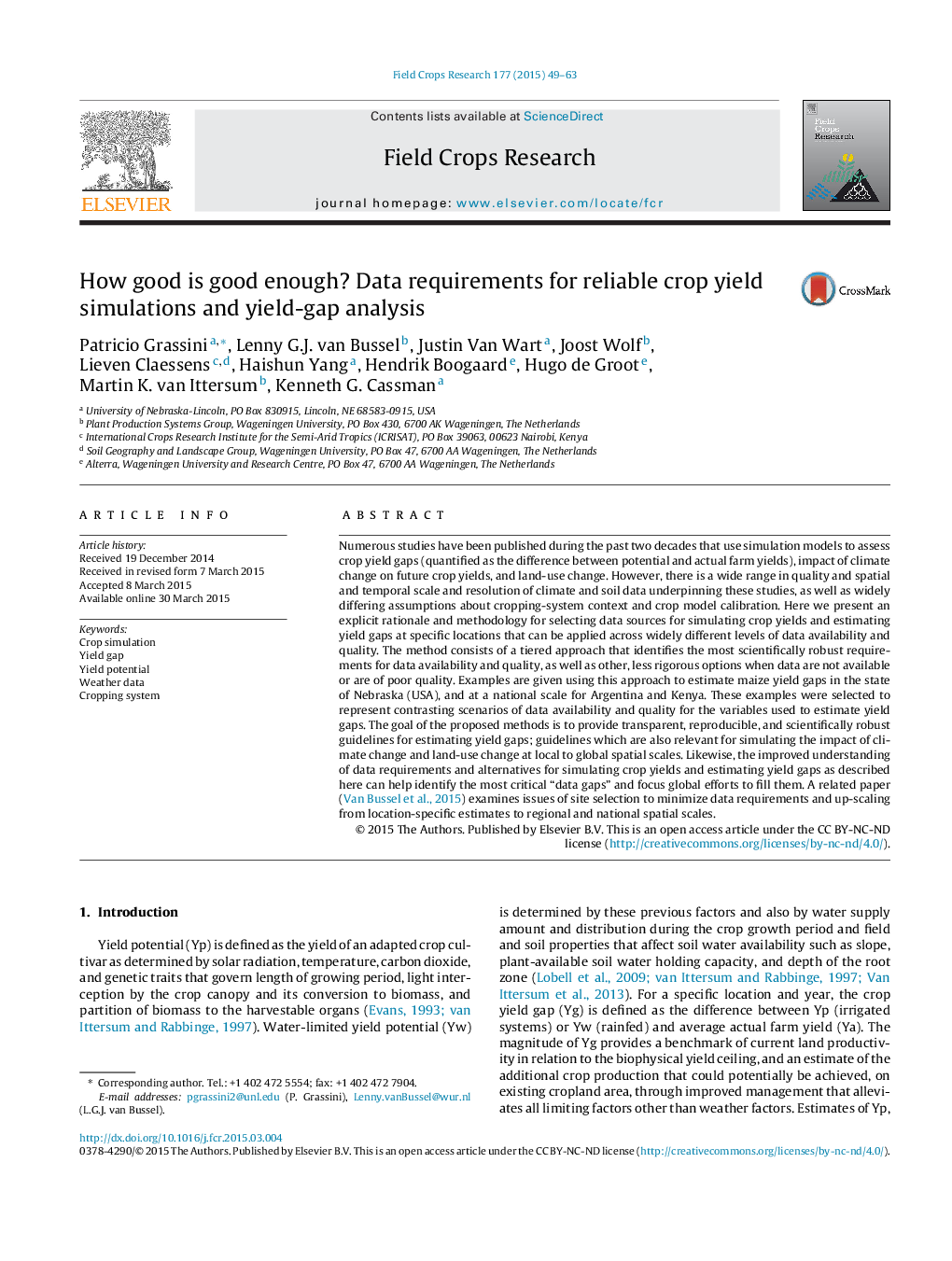| کد مقاله | کد نشریه | سال انتشار | مقاله انگلیسی | نسخه تمام متن |
|---|---|---|---|---|
| 6374917 | 1624686 | 2015 | 15 صفحه PDF | دانلود رایگان |
- A protocol for selecting data sources for crop modeling was developed.
- The methodology can be applied across widely different levels of data availability and quality.
- The protocol can help identify the most critical “data gaps” and focus efforts to fill them.
- This paper sets quality standards for future studies on yield gaps and other studies that rely on crop yield simulations.
Numerous studies have been published during the past two decades that use simulation models to assess crop yield gaps (quantified as the difference between potential and actual farm yields), impact of climate change on future crop yields, and land-use change. However, there is a wide range in quality and spatial and temporal scale and resolution of climate and soil data underpinning these studies, as well as widely differing assumptions about cropping-system context and crop model calibration. Here we present an explicit rationale and methodology for selecting data sources for simulating crop yields and estimating yield gaps at specific locations that can be applied across widely different levels of data availability and quality. The method consists of a tiered approach that identifies the most scientifically robust requirements for data availability and quality, as well as other, less rigorous options when data are not available or are of poor quality. Examples are given using this approach to estimate maize yield gaps in the state of Nebraska (USA), and at a national scale for Argentina and Kenya. These examples were selected to represent contrasting scenarios of data availability and quality for the variables used to estimate yield gaps. The goal of the proposed methods is to provide transparent, reproducible, and scientifically robust guidelines for estimating yield gaps; guidelines which are also relevant for simulating the impact of climate change and land-use change at local to global spatial scales. Likewise, the improved understanding of data requirements and alternatives for simulating crop yields and estimating yield gaps as described here can help identify the most critical “data gaps” and focus global efforts to fill them. A related paper (Van Bussel et al., 2015) examines issues of site selection to minimize data requirements and up-scaling from location-specific estimates to regional and national spatial scales.
Journal: Field Crops Research - Volume 177, June 2015, Pages 49-63
